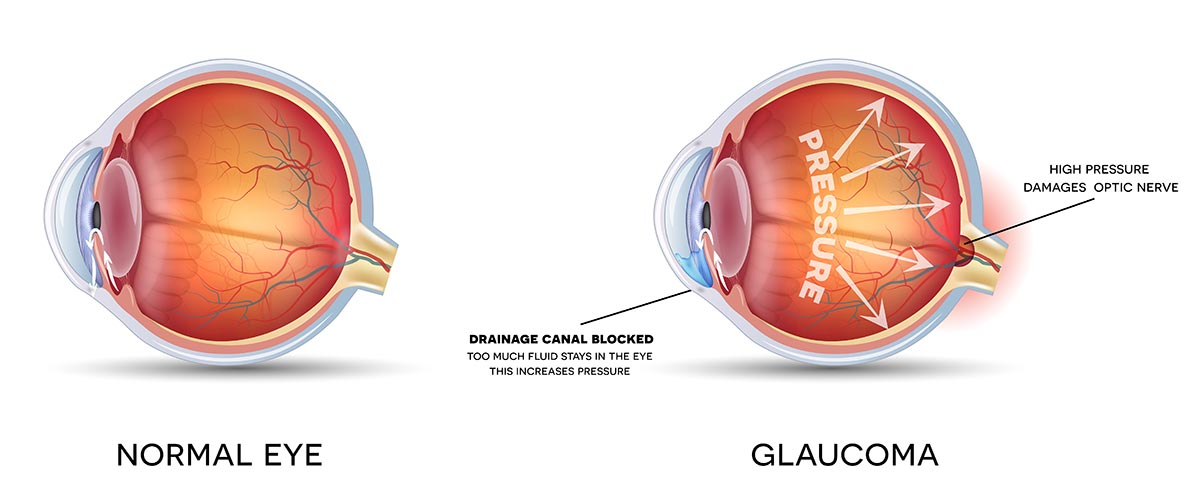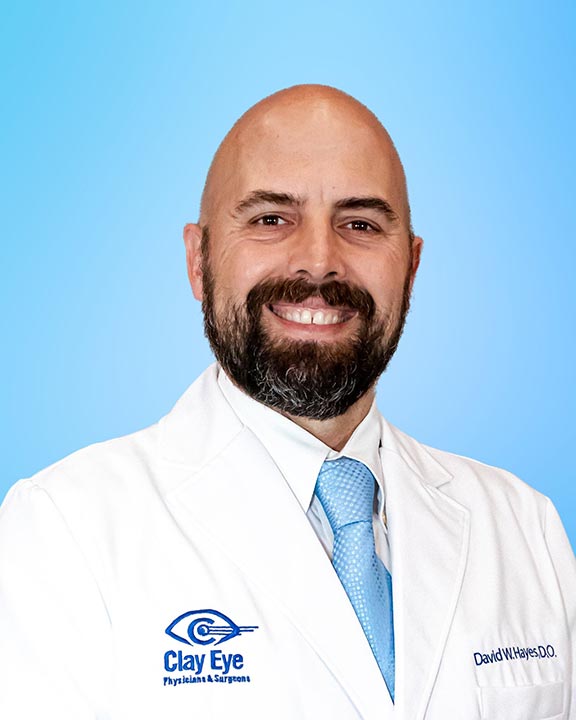David Hayes, DO & Yasmin Islam, MD
Meet our dedicated and experienced glaucoma specialists, David Hayes, DO and Yasmin Islam, MD. With their unwavering commitment to preserving and improving vision, these physicians lead our team in providing exceptional care to patients dealing with glaucoma. Their expertise, combined with cutting-edge treatments, ensures that every patient receives personalized, compassionate and effective solutions for this disease.
Signs of Glaucoma
Roughly 3 million Americans have glaucoma, and many of them do not even realize that they have this eye disease. Often times, there are no early symptoms, it typically isn’t painful, and it can steal your vision without you even knowing it. It is often referred to as the sneak-thief of sight.
Changes in vision and early signs of disease often arise at age 40, so it is important to see an ophthalmologist for a baseline screening. Your physician uses this screening to give you an overview of your overall eye health.

What is Glaucoma?
Glaucoma is an eye disease that damages the optic nerve and causes vision loss, often without warning and symptoms. In most cases, this glaucoma vision damage is due to increased pressure inside the eye.
Damage to the optic nerve can occur when the pressure within the eye increases, usually due to a build-up of aqueous fluid inside the eye. This leads to the development of blind spots in our field of vision. However, damage may occur without elevation of the intra-ocular pressure. Conversely, the pressure may at times be elevated without damaging the optic nerve. This is a condition known as Ocular Hypertension. Blind spots in the field of vision usually go undetected by the individual until the optic nerve is significantly damaged, and a significant loss of peripheral or central vision has occurred. A visual field evaluation can detect damage in its very early stages. If the disease is untreated, the optic nerve may be damaged to a point that irreversible blindness will result.
Glaucoma is considered a slow, progressive eye disease and while there is no cure, once diagnosed, you can manage your symptoms and slow the disease from progressing.
Risk Factors
Despite the fact that anyone can get glaucoma, some people are at higher risk than others.
Those with greater risk include:
- A family history of glaucoma
- Eye injuries
- Diabetes
- Migraine
- Nearsightedness (myopia)
- Use of cortisone drugs (steroids)
- People in these groups should have their first eye check no later than the age of 35. For most people, it is recommended to have an eye check for glaucoma by the age of 40.
Glaucoma Screening
A glaucoma screening usually includes the following:
- Optic nerve check with an ophthalmoscope
- Eye pressure check (tonometry)
- Visual field assessment, if needed
If Glaucoma worries you and you have a family history, please do not hesitate to contact us for an eye exam. The doctors at Clay Eye Physicians will help you diagnose glaucoma and help you determine a treatment protocol to control the intraocular pressure. We take great pride in helping patients limit the amount of damage that Glaucoma can do to your eyes.




